La Vuelta 2022 - Stage 8:- Pola de Laviana - Colláu Fancuaya. 153.4Km ***Spoilers***

blazing_saddles
Posts: 22,730
in Pro race
Stage 8:- Pola de Laviana - Colláu Fancuaya. 153.4Km
Saturday, August 27, 2022
Start Time: 13-10CET.
The second of the race's major mountain meetings comes on stage 8 as the peloton heads to the Colláu Fancuaya, never before included in the Spanish Grand Tour, and features a further five categorised ascents to boot. The finishing mountain, which was tarmacked in 2019. In total, the route has over 3,300 metres of climbing.

Pola de Laviana was the start point of Hugh Carthy’s successful 2020 expedition to the Angliru. La Vuelta returns to the Asturian town for a similar race. The route meanders in a mostly Westward direction, through the Asturias, with the preceding hills all marked as second- and third-category climbs and the penultimate test coming at 40km from the line on the 153km stage, before tackling the The Great Unknown.

The Climbs:
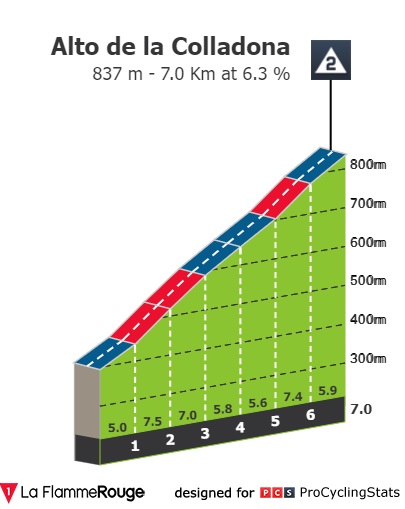
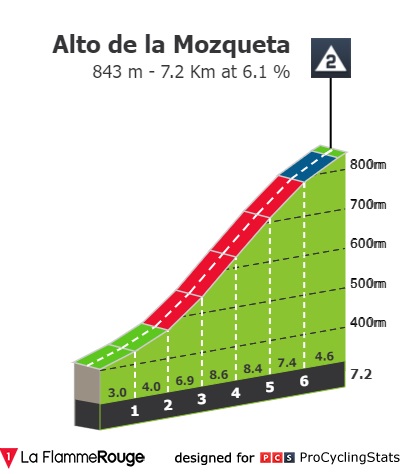
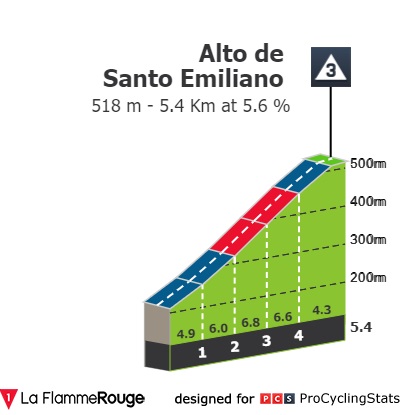
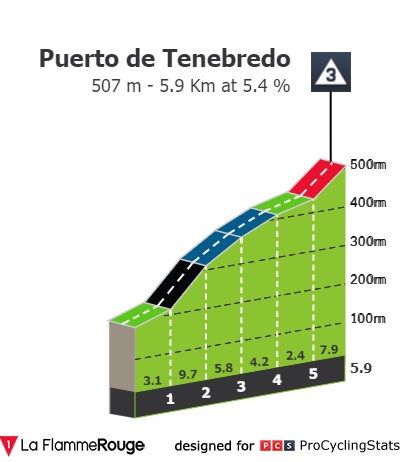
Final Kms.
The single lane road is typical of the Vuelta, with its changeable slopes and steep gradients. The roads starts to go up at shallow gradients with 18.7 kilometres to go, but the Collado Fancuaya kicks in hard in the last 10.1 kilometres. The average gradient sits at 8.5% and the final 700 metres go up at almost 11%.


What to Expect:
The finishing mountain, but it's likely to bring more movement in the GC battle. Plenty of mountain points out there for anyone targeting that classification, so it's likely that the breakaway will contain a strong climbing element, especially with the first, second category climb coming straight after the gun.
If the break of the day forms there, it has a good chance of going all the way.
Pola de Laviana
Population 12,882.
It has been only two years since Pola de Laviana made its La Vuelta debut. In 2020, the Asturian municipality hosted a stage departure with a finale at one of the race’s renowned giants: Alto de L’Angliru. Having become one of the capitals of the Alto Nalón, La Pola Llaviana is a natural treasure with several protected areas within its mining basin that attract visitors from all over the Principality. This parish is the most populated of Laviana and it is located in Nalon Valley.

Asturian cuisine
Asturias is especially known for its seafood, such as fresh squid, crab, shrimp and sea bass. Salmon are caught in Asturian rivers, notably the Sella; the first fish of the season is called campanu (Bable word for campana), a bell tolled to signal the first catch.
Salmón en papillote a la naranja

The most famous regional dish is fabada Asturiana, a rich stew made with the Asturian typical large white beans (fabes de la Granja), pork shoulder (llacón), morcilla, chorizo, and saffron.
Fabada Asturiana with Cider.

Colláu Fancuaya
Population 133
Yernes y Tameza is inextricably linked to the mountains that surround the municipality. The locality has one of the highest altitudes in the Principality of Asturias and dedicates celebrations such as the Feria de Cuevallagar to its neighbouring mountain passes. It is precisely one of these climbs, the one ending at Colláu Fancuaya, that will make its debut in La Vuelta this year – Over 10 km that will culminate with a finish-line located more than 1000 metres above sea level.

A video of the entire climb by bike.
 https://www.youtube.com/watch?v=6buej1U-w0g
https://www.youtube.com/watch?v=6buej1U-w0g
Asturian cheeses, especially Cabrales, are also famous throughout Spain and beyond; Cabrales is known for its pungent odour and strong flavour. Asturias is often called "the land of cheeses" (el pais de los quesos) due to the product's diversity and quality in this region.
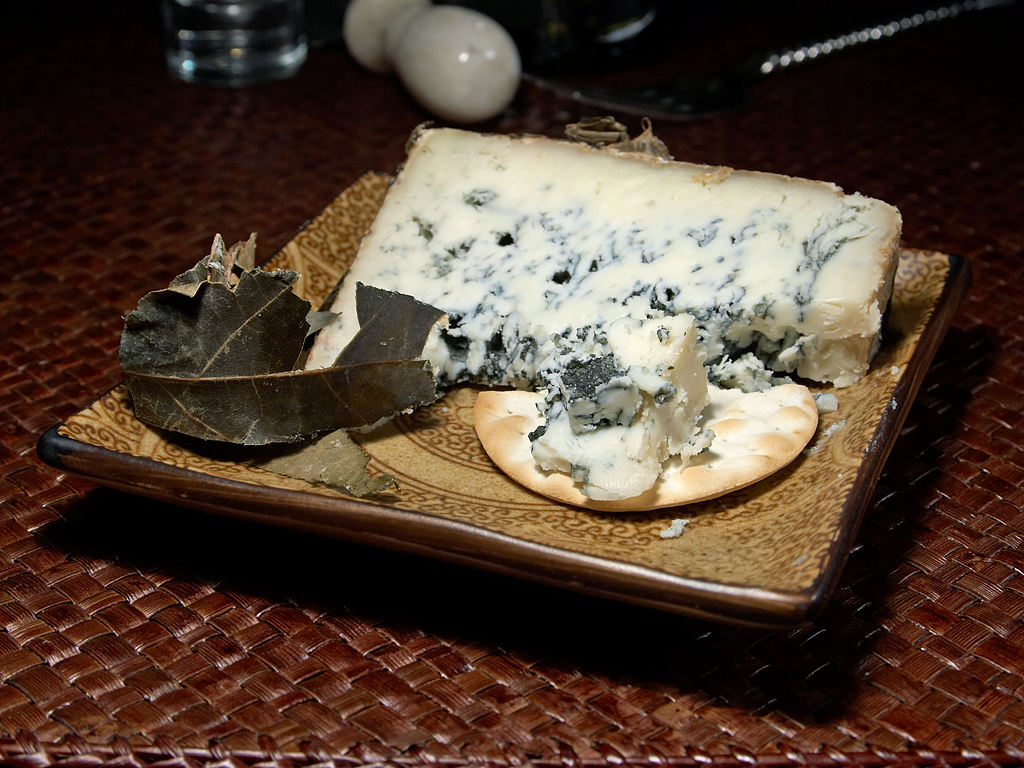
Apple groves foster the production of the traditional alcoholic drink, a natural cider (sidra). It is a very dry cider, and unlike French or English natural ciders, uses predominantly acidic apples, rather than sweet or bittersweet. The proportions are: acidic 40%, sub-acidic 30-25%, sweet 10-15%, bittersweet 15-20%, bitter 5%.

Saturday, August 27, 2022
Start Time: 13-10CET.
The second of the race's major mountain meetings comes on stage 8 as the peloton heads to the Colláu Fancuaya, never before included in the Spanish Grand Tour, and features a further five categorised ascents to boot. The finishing mountain, which was tarmacked in 2019. In total, the route has over 3,300 metres of climbing.

Pola de Laviana was the start point of Hugh Carthy’s successful 2020 expedition to the Angliru. La Vuelta returns to the Asturian town for a similar race. The route meanders in a mostly Westward direction, through the Asturias, with the preceding hills all marked as second- and third-category climbs and the penultimate test coming at 40km from the line on the 153km stage, before tackling the The Great Unknown.

The Climbs:




Final Kms.
The single lane road is typical of the Vuelta, with its changeable slopes and steep gradients. The roads starts to go up at shallow gradients with 18.7 kilometres to go, but the Collado Fancuaya kicks in hard in the last 10.1 kilometres. The average gradient sits at 8.5% and the final 700 metres go up at almost 11%.


What to Expect:
The finishing mountain, but it's likely to bring more movement in the GC battle. Plenty of mountain points out there for anyone targeting that classification, so it's likely that the breakaway will contain a strong climbing element, especially with the first, second category climb coming straight after the gun.
If the break of the day forms there, it has a good chance of going all the way.
Pola de Laviana
Population 12,882.
It has been only two years since Pola de Laviana made its La Vuelta debut. In 2020, the Asturian municipality hosted a stage departure with a finale at one of the race’s renowned giants: Alto de L’Angliru. Having become one of the capitals of the Alto Nalón, La Pola Llaviana is a natural treasure with several protected areas within its mining basin that attract visitors from all over the Principality. This parish is the most populated of Laviana and it is located in Nalon Valley.

Asturian cuisine
Asturias is especially known for its seafood, such as fresh squid, crab, shrimp and sea bass. Salmon are caught in Asturian rivers, notably the Sella; the first fish of the season is called campanu (Bable word for campana), a bell tolled to signal the first catch.
Salmón en papillote a la naranja

The most famous regional dish is fabada Asturiana, a rich stew made with the Asturian typical large white beans (fabes de la Granja), pork shoulder (llacón), morcilla, chorizo, and saffron.
Fabada Asturiana with Cider.

Colláu Fancuaya
Population 133
Yernes y Tameza is inextricably linked to the mountains that surround the municipality. The locality has one of the highest altitudes in the Principality of Asturias and dedicates celebrations such as the Feria de Cuevallagar to its neighbouring mountain passes. It is precisely one of these climbs, the one ending at Colláu Fancuaya, that will make its debut in La Vuelta this year – Over 10 km that will culminate with a finish-line located more than 1000 metres above sea level.

A video of the entire climb by bike.
 https://www.youtube.com/watch?v=6buej1U-w0g
https://www.youtube.com/watch?v=6buej1U-w0gAsturian cheeses, especially Cabrales, are also famous throughout Spain and beyond; Cabrales is known for its pungent odour and strong flavour. Asturias is often called "the land of cheeses" (el pais de los quesos) due to the product's diversity and quality in this region.

Apple groves foster the production of the traditional alcoholic drink, a natural cider (sidra). It is a very dry cider, and unlike French or English natural ciders, uses predominantly acidic apples, rather than sweet or bittersweet. The proportions are: acidic 40%, sub-acidic 30-25%, sweet 10-15%, bittersweet 15-20%, bitter 5%.

"Science is a tool for cheaters". An anonymous French PE teacher.
3
Comments
-
Not the greatest of places for the start.
Cathy had a great day in 2020. Tanfield had a nightmare if I remember correctly.0 -
The number of riders being pulled out of the race with Covid is starting to be of concern.
Not sure why Jake Stewart is a dns, but quite possibly it’s because of the parcour immediately ahead.
Mark Donovan, Arndt and Delaplace all had positive tests."Science is a tool for cheaters". An anonymous French PE teacher.0 -
Proper test for QS here"If I was a 38 year old man, I definitely wouldn't be riding a bright yellow bike with Hello Kitty disc wheels, put it that way. What we're witnessing here is the world's most high profile mid-life crisis" Afx237vi Mon Jul 20, 2009 2:43 pm0
-
Stewart has stomach trouble overnight according to the team.blazing_saddles said:The number of riders being pulled out of the race with Covid is starting to be of concern.
Not sure why Jake Stewart is a dns, but quite possibly it’s because of the parcour immediately ahead.
Mark Donovan, Arndt and Delaplace all had positive tests.0 -
Plenty of attacks as you would expect"If I was a 38 year old man, I definitely wouldn't be riding a bright yellow bike with Hello Kitty disc wheels, put it that way. What we're witnessing here is the world's most high profile mid-life crisis" Afx237vi Mon Jul 20, 2009 2:43 pm0
-
Carapaz and Valverde join the breakaway party"Science is a tool for cheaters". An anonymous French PE teacher.0
-
Masnada and JA workload is going to be somewhat substantial"If I was a 38 year old man, I definitely wouldn't be riding a bright yellow bike with Hello Kitty disc wheels, put it that way. What we're witnessing here is the world's most high profile mid-life crisis" Afx237vi Mon Jul 20, 2009 2:43 pm0
-
Vine having a go"If I was a 38 year old man, I definitely wouldn't be riding a bright yellow bike with Hello Kitty disc wheels, put it that way. What we're witnessing here is the world's most high profile mid-life crisis" Afx237vi Mon Jul 20, 2009 2:43 pm0
-
Letting nothing go ..."If I was a 38 year old man, I definitely wouldn't be riding a bright yellow bike with Hello Kitty disc wheels, put it that way. What we're witnessing here is the world's most high profile mid-life crisis" Afx237vi Mon Jul 20, 2009 2:43 pm0
-
Break.forming ... Pinot trying to bridge"If I was a 38 year old man, I definitely wouldn't be riding a bright yellow bike with Hello Kitty disc wheels, put it that way. What we're witnessing here is the world's most high profile mid-life crisis" Afx237vi Mon Jul 20, 2009 2:43 pm0
-
Alexey Lutsenko (Astana-Qazaqstan), Mikel Landa (Bahrain Victorious), Bruno Armirail (Groupama-FDJ), Rein Taaramae (Intermarché-Wanty-Gobert), Lucas Hamilton (BikeExchange-Jayco) and Mads Pedersen (Trek-Segafredo) have joined Marc Soler (UAE Team Emirates) and Jay Vine (Alpecin-Deceuninck),"If I was a 38 year old man, I definitely wouldn't be riding a bright yellow bike with Hello Kitty disc wheels, put it that way. What we're witnessing here is the world's most high profile mid-life crisis" Afx237vi Mon Jul 20, 2009 2:43 pm0
-
Powerful group"If I was a 38 year old man, I definitely wouldn't be riding a bright yellow bike with Hello Kitty disc wheels, put it that way. What we're witnessing here is the world's most high profile mid-life crisis" Afx237vi Mon Jul 20, 2009 2:43 pm0
-
Pinot and reichenbach trying to bridge . Clawing it back still at 50 secs"If I was a 38 year old man, I definitely wouldn't be riding a bright yellow bike with Hello Kitty disc wheels, put it that way. What we're witnessing here is the world's most high profile mid-life crisis" Afx237vi Mon Jul 20, 2009 2:43 pm0
-
Shades of the 2018 Giro.mididoctors said:Pinot and reichenbach trying to bridge . Clawing it back still at 50 secs

"Science is a tool for cheaters". An anonymous French PE teacher.0 -
Armiral dropping back for pinot and reichenbach. Hmmmmm"If I was a 38 year old man, I definitely wouldn't be riding a bright yellow bike with Hello Kitty disc wheels, put it that way. What we're witnessing here is the world's most high profile mid-life crisis" Afx237vi Mon Jul 20, 2009 2:43 pm0
-
Fdj trio join the break"If I was a 38 year old man, I definitely wouldn't be riding a bright yellow bike with Hello Kitty disc wheels, put it that way. What we're witnessing here is the world's most high profile mid-life crisis" Afx237vi Mon Jul 20, 2009 2:43 pm0
-
Robbie McEwen has just read out part of my thread intro, word for word!
 "Science is a tool for cheaters". An anonymous French PE teacher.3
"Science is a tool for cheaters". An anonymous French PE teacher.3 -
Lol"If I was a 38 year old man, I definitely wouldn't be riding a bright yellow bike with Hello Kitty disc wheels, put it that way. What we're witnessing here is the world's most high profile mid-life crisis" Afx237vi Mon Jul 20, 2009 2:43 pm0
-
We've known for a long time they are the best.0
-
Break may go the whole way"If I was a 38 year old man, I definitely wouldn't be riding a bright yellow bike with Hello Kitty disc wheels, put it that way. What we're witnessing here is the world's most high profile mid-life crisis" Afx237vi Mon Jul 20, 2009 2:43 pm0
-
QS fading off the front of the bunch ..."If I was a 38 year old man, I definitely wouldn't be riding a bright yellow bike with Hello Kitty disc wheels, put it that way. What we're witnessing here is the world's most high profile mid-life crisis" Afx237vi Mon Jul 20, 2009 2:43 pm0
-
Movistar moving up ."If I was a 38 year old man, I definitely wouldn't be riding a bright yellow bike with Hello Kitty disc wheels, put it that way. What we're witnessing here is the world's most high profile mid-life crisis" Afx237vi Mon Jul 20, 2009 2:43 pm0
-
Mads sits up out the break .. points collected"If I was a 38 year old man, I definitely wouldn't be riding a bright yellow bike with Hello Kitty disc wheels, put it that way. What we're witnessing here is the world's most high profile mid-life crisis" Afx237vi Mon Jul 20, 2009 2:43 pm1
-
Final climb gap 3:30"If I was a 38 year old man, I definitely wouldn't be riding a bright yellow bike with Hello Kitty disc wheels, put it that way. What we're witnessing here is the world's most high profile mid-life crisis" Afx237vi Mon Jul 20, 2009 2:43 pm0
-
Ineos trying to take it over"If I was a 38 year old man, I definitely wouldn't be riding a bright yellow bike with Hello Kitty disc wheels, put it that way. What we're witnessing here is the world's most high profile mid-life crisis" Afx237vi Mon Jul 20, 2009 2:43 pm0
-
JA takes it up"If I was a 38 year old man, I definitely wouldn't be riding a bright yellow bike with Hello Kitty disc wheels, put it that way. What we're witnessing here is the world's most high profile mid-life crisis" Afx237vi Mon Jul 20, 2009 2:43 pm0
-
Gap melting"If I was a 38 year old man, I definitely wouldn't be riding a bright yellow bike with Hello Kitty disc wheels, put it that way. What we're witnessing here is the world's most high profile mid-life crisis" Afx237vi Mon Jul 20, 2009 2:43 pm0
-
Alaphilippe done after taking back a huge chunk of time"Science is a tool for cheaters". An anonymous French PE teacher.0
-
JA done ..."If I was a 38 year old man, I definitely wouldn't be riding a bright yellow bike with Hello Kitty disc wheels, put it that way. What we're witnessing here is the world's most high profile mid-life crisis" Afx237vi Mon Jul 20, 2009 2:43 pm0
-
Lutshenko attacks from break"If I was a 38 year old man, I definitely wouldn't be riding a bright yellow bike with Hello Kitty disc wheels, put it that way. What we're witnessing here is the world's most high profile mid-life crisis" Afx237vi Mon Jul 20, 2009 2:43 pm0


